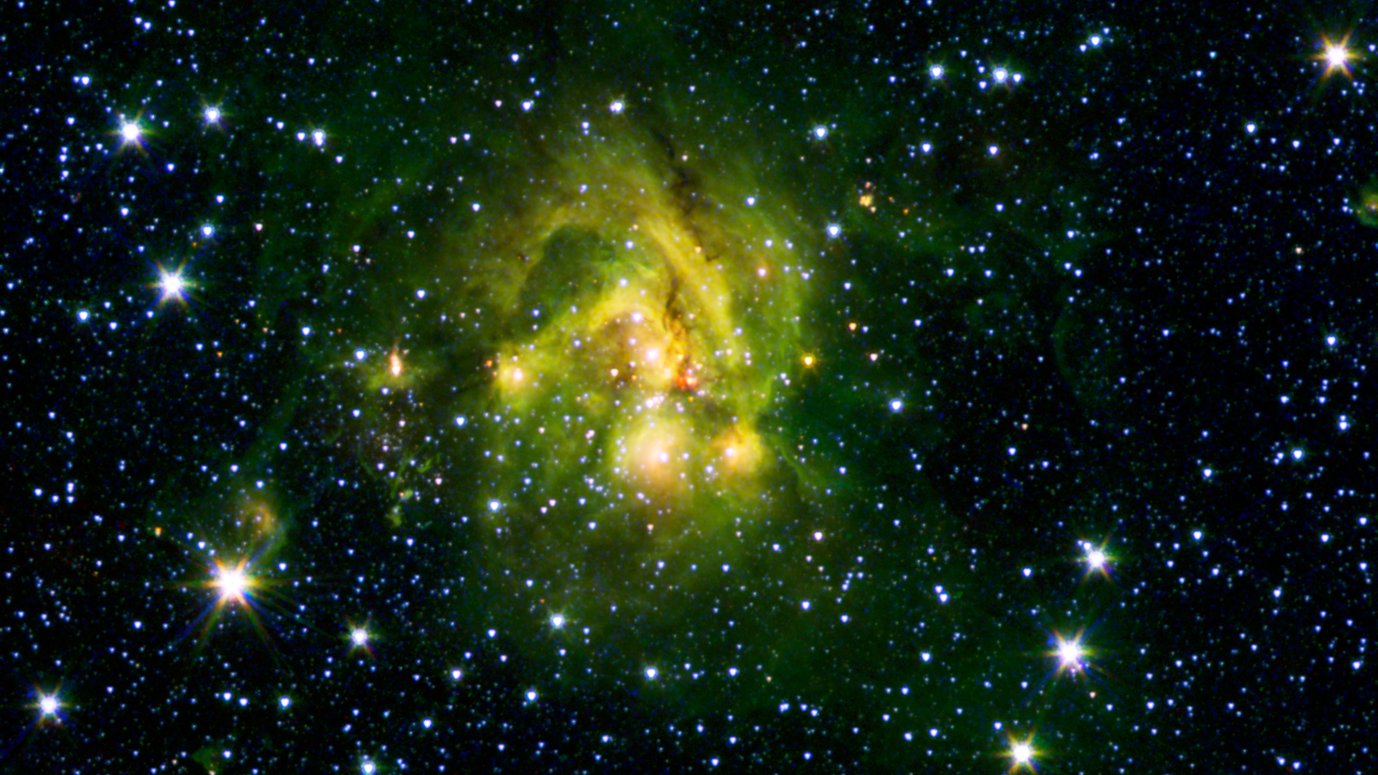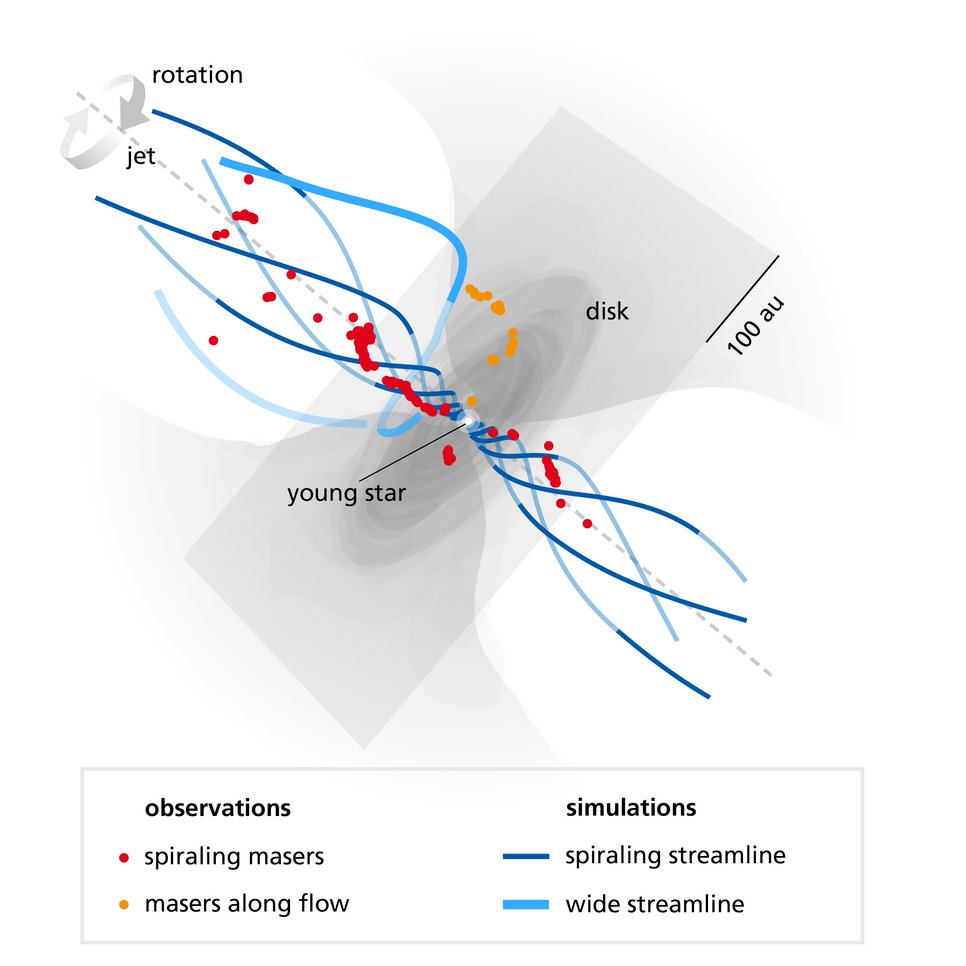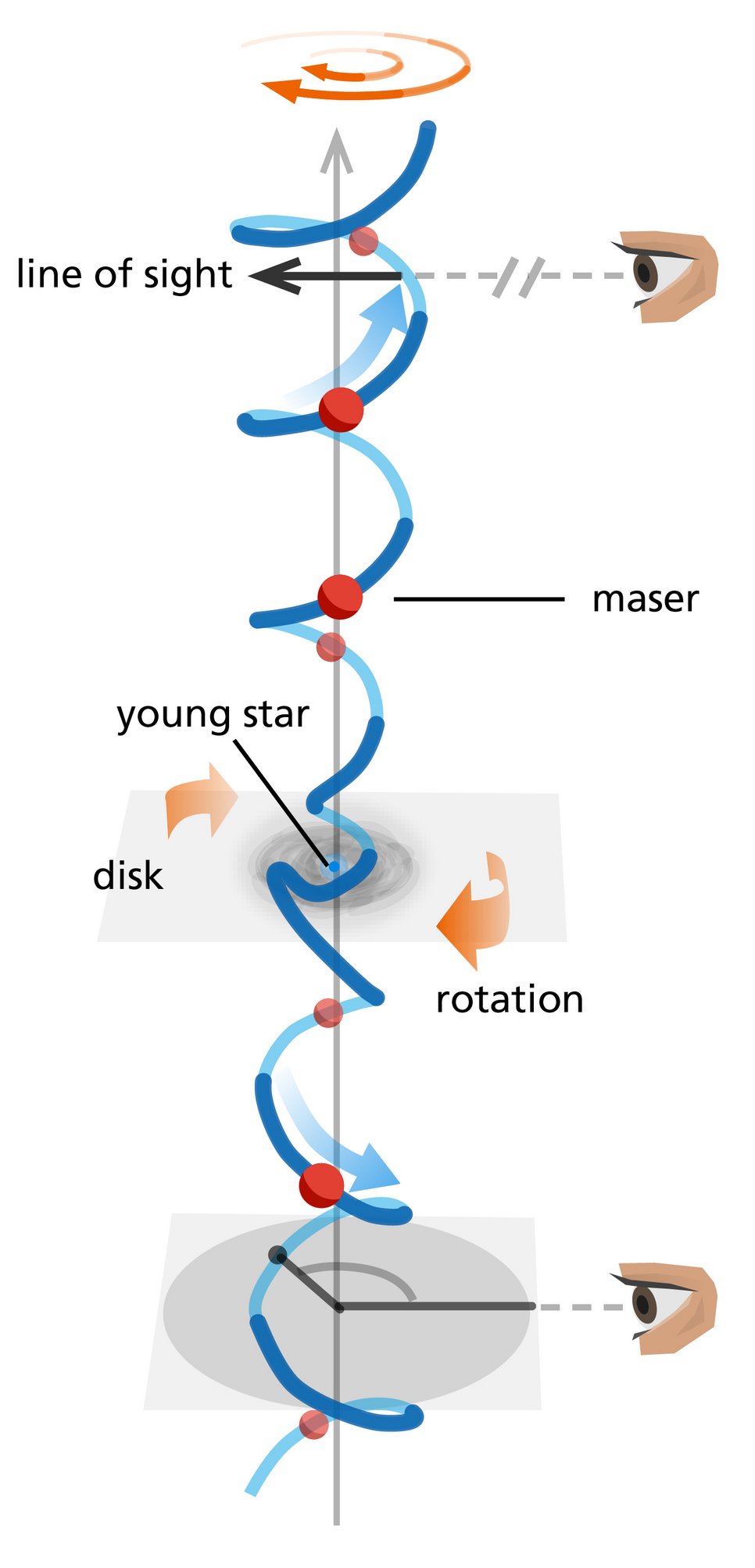Snapshot of a disk wind feeding a collimated gas jet
Astronomers trace the trajectory of gas streams from a disk surrounding a massive young star to a collimated jet by observing water masers
An international team of astronomers from Italy and Germany, with important contributions by MPIA researcher Henrik Beuther, have directly traced gas streams launching from an accretion disk to a jet ejecting material into open space for the first time. The INAF-led study observationally confirms the scenario of disk winds, theoretically explained by magnetohydrodynamics, predicted to originate from accretion disks around astrophysical objects like black holes or newly forming stars. The new study, published today in Nature Astronomy, directly traces the gas streamlines from the disk around a forming star into the jet by observing water maser emission.

During their formation, many astrophysical objects, such as supermassive black holes, stars, and giant gas planets, are surrounded by accretion disks and launch powerful jets. Those jets consist of ionised gas collimated along the disk rotation axis. The link between accretion, the process of funnelling gas onto celestial objects, and ejection is essential for their formation. They collapse during gas accumulation, leading to very high angular velocities caused by the conservation of angular momentum. Jets remove angular momentum from those systems, ensuring sustained accretion onto the central object.

With the new study, astronomers from Italy and Germany traced gas parcels along the trajectory of the gas flow from the accretion disk into the jet for the first time observationally. The reconstructed streamlines agree with predictions of a process scientists developed 40 years ago: magnetohydrodynamic disk winds. Magnetohydrodynamics describes the motion of ionised gas, also known as plasma, influenced by a magnetic field. Magnetohydrodynamic disk winds are the proposed mechanism that removes a fraction of the accretion flow and accelerates it along the disk rotation axis while forming a bipolar collimated jet.
Luca Moscadelli and Alberto Sanna, both from the National Institute for Astrophysics (INAF) in Florence and Cagliari, Italy, Henrik Beuther from the Max-Planck-Institute for Astronomy (MPIA), Heidelberg, André Oliva from the University of Tübingen and Rolf Kuiper from the University of Duisburg-Essen, all three in Germany, peered into the heart of a massive star in the making. Among astronomers, it goes by the designation of IRAS 21078+5211. Using radio interferometry, they observed a specific emission in radio waves at a frequency around 22 GHz or a wavelength of 1.4 centimetres.
This emission indicates the presence of shocked water vapour observable as bright natural masers – the laser equivalent in the microwave band – in star-formation regions. Like lasers, masers are intense and highly collimated beams of radiation at radio frequencies. The water masers trace the gas motion, enabling the team to directly observe two kinematic patterns typical of a magnetohydrodynamic disk wind: spiralling motions close to the rotation axis and a co-rotating stream at larger radii.

The astronomers employed the global Very Long Baseline Interferometry (VLBI) array, with 26 radio telescopes distributed across Europe, Asia and the USA. These facilities have simultaneously observed the water maser emission towards the forming star for 24 hours. This technique permits simulating a giant telescope with a diameter comparable to Earth’s diameter. As a result, it attains a high angular resolution, corresponding to detecting a metre-sized object on the Moon from the Earth. This ability was essential to study the spatial distribution of the water masers near the forming star.
Luca Moscadelli, the main author of the new study, says: “Our work shows that Very Long Baseline Interferometry of water masers towards forming stars can be an effective tool to study the physics of disk winds with unprecedented detail. We have performed novel observations of the water maser emission by including all telescopes available in the VLBI network, intending to simulate next-generation radio interferometers, which will improve current sensitivities by more than an order of magnitude.”
Up to now, the best observational evidence for magnetohydrodynamic disk winds was detecting what astronomers call a line-of-sight velocity gradient perpendicular to the jet axis. However, this method is inferior to the newly applied technique as it cannot distinguish between individual gas trajectories. Instead, all motions appear superimposed. Hence, it only offers indirect evidence, prone to misinterpretation and systematic errors. Tracing the streamlines typical of a magnetohydrodynamic disk wind via the spatial locations and velocities of masers, i.e. gas parcels along the flow trajectories, is a much more compelling proof.
“Although scientists have long described the jets well in theory, this data allows us to observe and analyse the gas distribution along the magnetic field in detail for the first time observationally,” says Henrik Beuther from MPIA. “It’s great to see how well modelling and observation work together.”
MN


